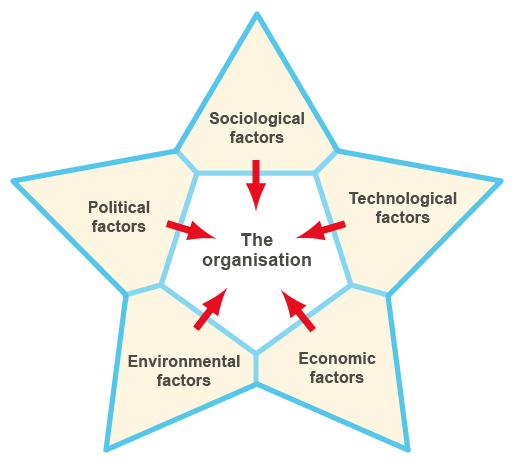2 Analysing the external environment
One clear difference between the German and English systems is the external environment in which they operate. The two systems seem to reflect to some extent the values of each society. A key success factor for any type of business is an accurate understanding of the external environment in which they operate. An ongoing, long-term analysis of what is happening in all facets of the external environment means that changes which impact on the business can be monitored, anticipated and dealt with appropriately.
The extract below explores one way that businesses understand the external environment: the STEEP model. As you read start thinking about how this model might apply to the business of football.
The STEEP model
The STEEP model uses the five headings of sociological, technological, economic, environmental and political factors.
Sociological factors
Sociological factors that are likely to affect businesses include demographic changes in the age and structure of populations, patterns of work (part/full time), gender roles, patterns of consumer consumption and the ways in which the culture of a population or country gradually changes and develops.
Technological factors
Internet and digital technologies place challenges on the ability of business to meet customer demands. It is difficult to predict where developing technologies will take us next, but it is possible to focus on the process of technological change and its implications for business.
Economic factors
The activity of world money markets and financial institutions affects businesses in a number of ways. Important variables include the rate of economic growth, interest rates, inflation, energy prices, exchange rates, wages and levels of employment. The state of a country’s economy pervades all aspects of business life. It affects the level of demand for goods and services, the availability and cost of most importantly labour but also raw materials, buildings and land.
Environmental factors
Environmental issues are of growing importance as people all around the world are more concerned than ever before about the impact of businesses on the natural environment. Businesses need to consider a number of factors including legislation (governmental changes requiring firms to be more environmentally aware) and the pressure from customers for them to operate to high environmental standards.
Political factors
Political influences control or affect most of what we do. There are political influences on business in terms of rules and regulations imposed by government (local, national and global), as well as the influences of such organisations such as chambers of commerce, trade unions and other bodies concerned with protecting public health and safety.
The next section looks at how to apply STEEP to the business of football.

